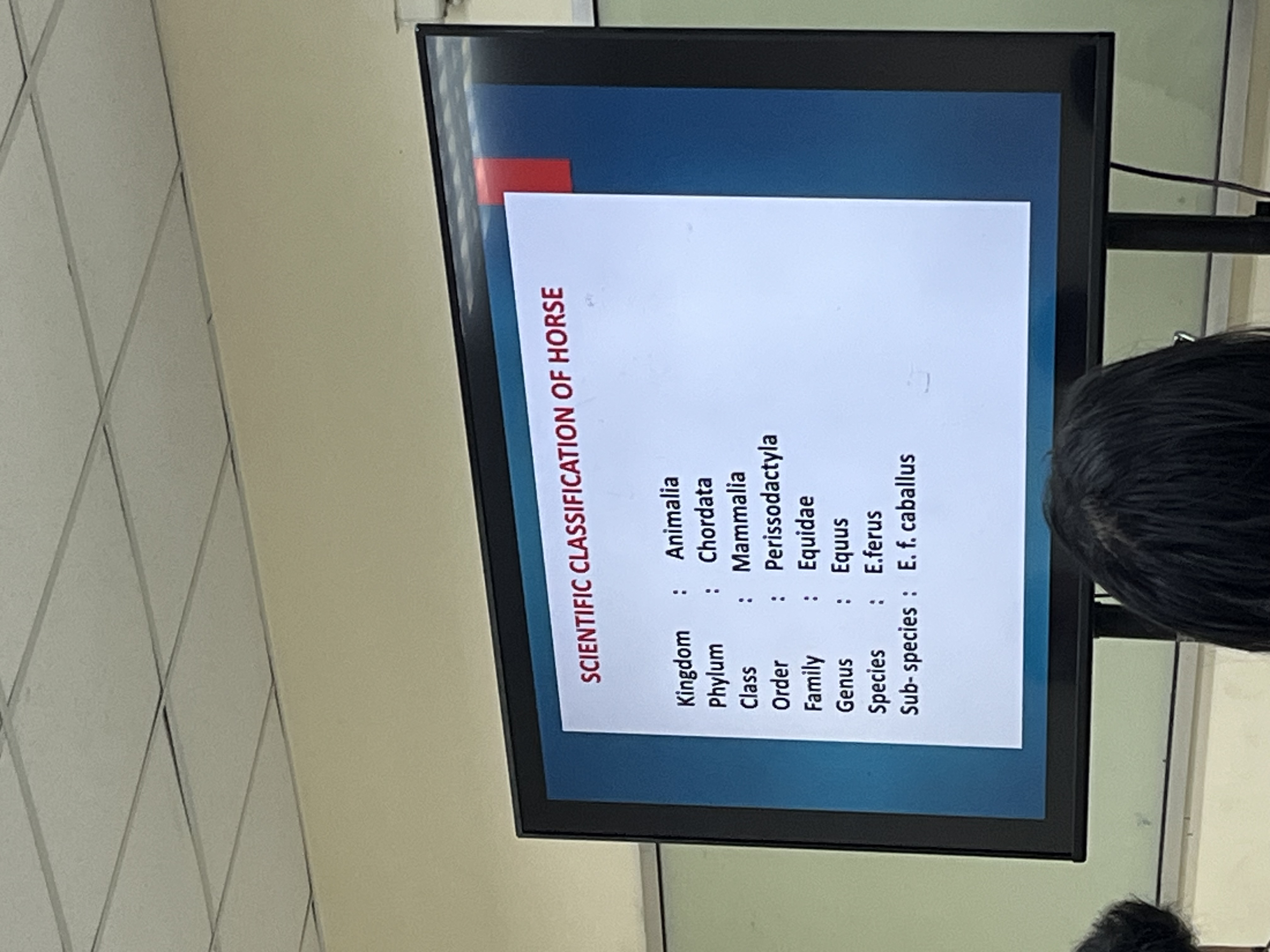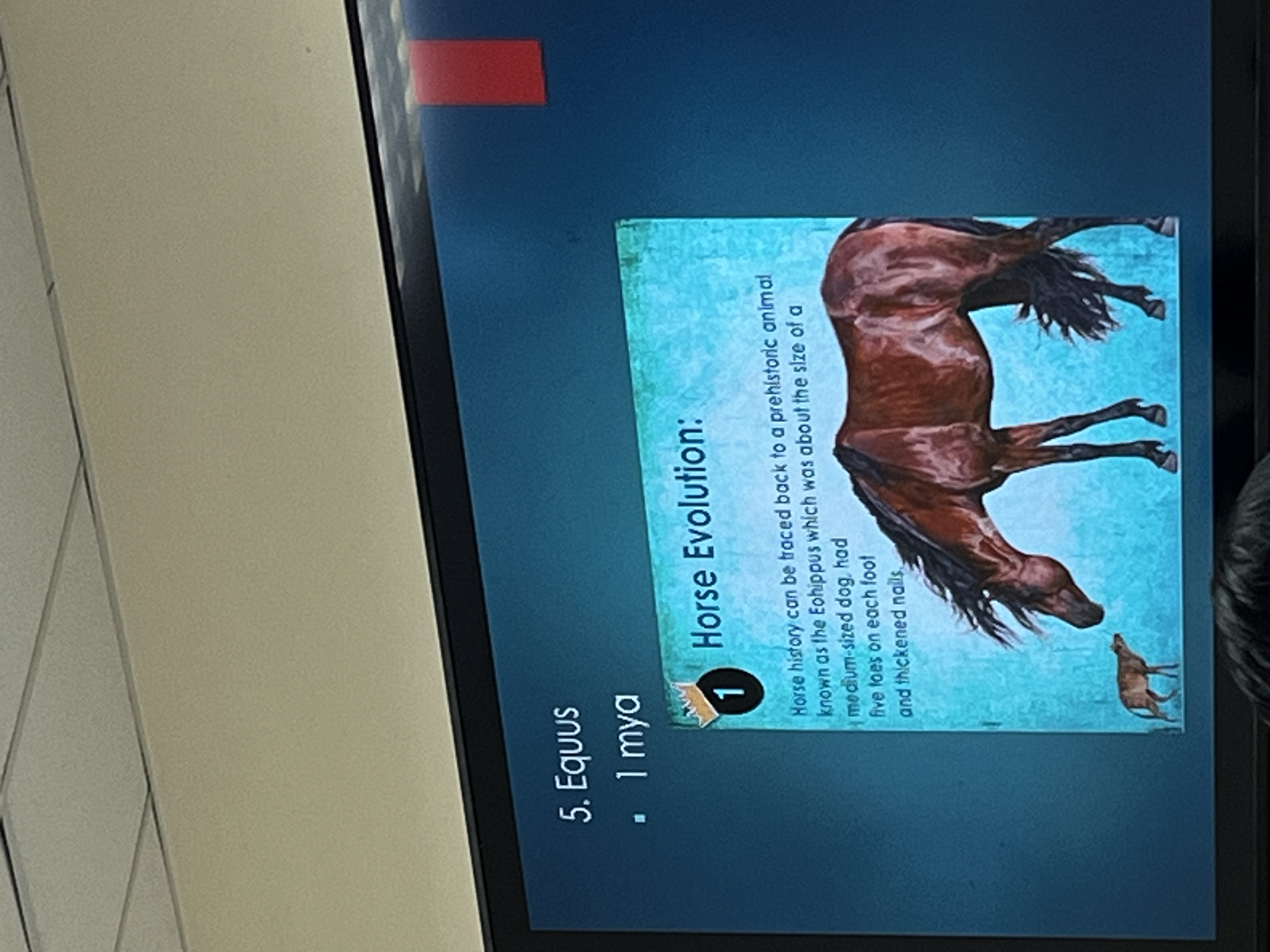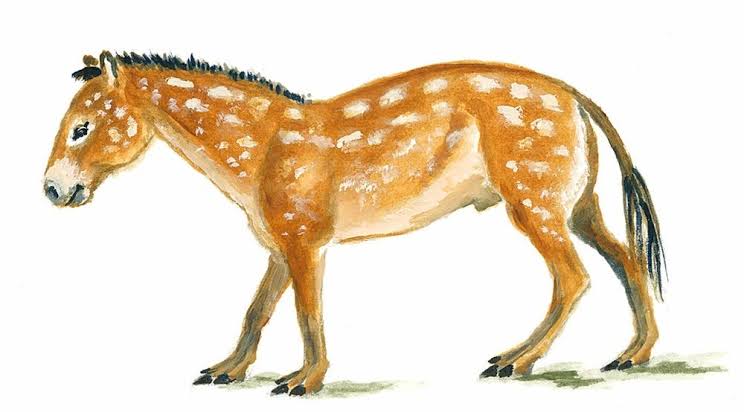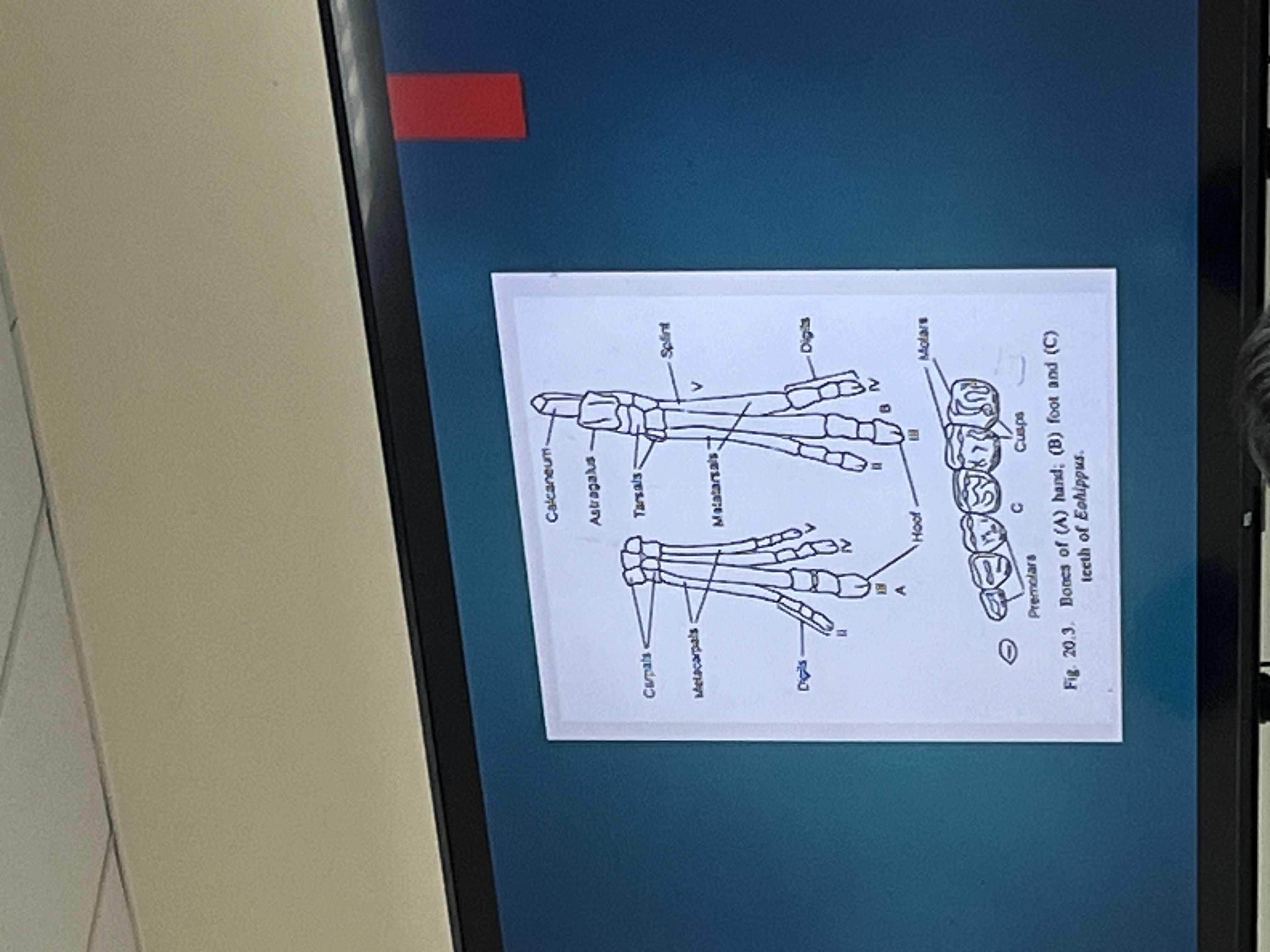EVOLUTION OF THE HORSE 🐎🐴
1/20
There's no tags or description
Looks like no tags are added yet.
Name | Mastery | Learn | Test | Matching | Spaced |
|---|
No study sessions yet.
21 Terms
Ungulate
Hoof
Perissidactyla
Order of horse
Genus Equus
Horse, zerbras, and asses which is the last remaining branch diverse groups of equids
Rhino
Cousin of the horse hahaha
Tapir
Horse with pig like snout
Scientific classification of horse
Kingdom: Animalia
Phylum: Chordata
Class: Mammalia
Order: Perissodactyla
Family: Equidae
Genus: Equus
Species: E.ferus
Sub-species: E. f. caballus

Dae in scientific name
FAMILY
North America grasslands
The very fist horse evolved on the
Australia
Country that has special animals (unique)
Eohippus (dawn horse) or Hyracotherium
earliest ancestor of the horse, about 60 mya [Eocene) (Million years ago)
about 2 feet in height, the size of a cat or a dog arched back and snout-like noses
dentition (brachydont - low-crowned and bunodont - low cusps) adapted to feed on soft vegetation
ulna in foreleg and fibula in hind leg complete
Mesohiopus (middle horse)
about 40 mya, Oligocene
about 24 inches at the shoulder
back less arched, face, snout and neck somewhat longer
six grinding cheek teeth with single premolar in front for grinding down tough vegetation
each foot has 3 toes, the 1st and 5th remained but small and not used for walking
3rd toe stronger and longer than the outer ones, the 4th diminished to a vestigial nub
Vestigial
Non functioning
Merychippus (ruminant or cud-chewing horse)
effective grazer and runner (because it evolutionized to having 3 toes on each foot)
middle of Miocene epoch about 30 mya
wider molar for crunching hard grasses
hindlegs relatively short
3 toes on each foot, side toes almost useless but center was long and strong and ended in a curved hoof which bore all of the animal's weight
Plohippus
during the Pliocene (Ice Age) period, 10 mya grew bigger that their ancestors and looked like the modern horse
teeth strongly curved but became better fitted for eating grass
side toes became short bones along the leg leaving the middle toe with its hoof to support the animal
skull had a deep facial fossa
long and slim limbs reveal quick-footed animal
Equus

Eohippus
About the size of a fox, or a medium sized dog.
Nicknamed "Dawn Horse"
Looked like a deer in skin, most likely for camouflage.
Had 5 toes on frontal feet, and three on hind feet.
Toes ended in a strong, thick, horny type nail and their tips.
had little or no lateral vision.
teeth were similar to a pig, short and crowned for eating plants.
stood about 14 inches high at his shoulder and weighed around
12 ibs

HORSE LEG BONES
Malabo 😂

RANDOM INFOS ABOUT THE MESOHIPPUS
The mesohippus was lost some of its toes.
The evolved mesohippus was 3 toed.
The middle toed was larger in size and the all three toed was supporting the animals weight.
It stand the size 18 to 24 inches at the shoulder.
It has longer legs, neck, compared with the Eohippus.
Larger limbs and legs is useful for the species run faster.
The evolution of horse has low crowned molors. Its premolar teeth became more like molar.
The fossil of the species was found in Oligocene layers.
Merychippus
Looked very similar to today's horses.
Stood over 36 inches tall at shoulder
Sell had three toes, outside toe became weaker.
Head changed, the eye moved, allowing better vision.
Longer neck, for easier grazing
Developed defenses.
Developed a better sense of smell
Toes started turning into hooves.
Teeth develoced into the teeth we know todav.
Pilotippus
Considered to direct link to the Equus, which is in short compared to Eques.
Originated 12-6 million years ago.
Fast single toed, or hooved horse. Strong leg ligaments, to increase speed and poset.
Fore feet - 1 finger 2 spent hind feet - 1 toe, 2 splint.
Had a dished face. Resembled a pony in many factors.
Fonsils of phobipous are found at many late miscene localities in colorado, the great plain of Us and Canada.
Equus
This is the horse we know today!
Does not have a dished face.
Many strands of horses arose after the Pilohippus, the Equus was the only to survive.
About 3.000 years ago, the modern day horse was used for migration, farming, warfare, sport, communication, and travel.
Horses are now used for many of the same reasons, and more.